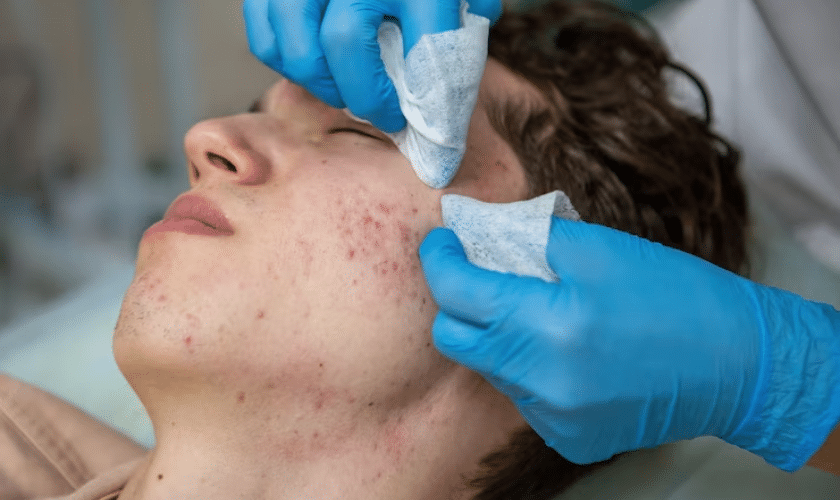Scars are a natural part of the body’s healing process, but they can often be a source of self-consciousness and discomfort for many individuals. In cosmetic dermatology, the science behind scar reduction has advanced significantly, offering a range of innovative treatments to help diminish the appearance of scars and improve skin texture. Understanding the science behind scar reduction can help individuals make informed decisions about their skincare routine and treatment options.
Understanding Scars
Before diving into the science of scar reduction, it’s essential to understand how scars form. When the skin is injured, the body produces collagen fibers to repair the damage. These collagen fibers can sometimes form a raised or depressed mark on the skin, known as a scar. The appearance of a scar can vary depending on factors such as the depth and severity of the injury, as well as the individual’s skin type and genetics.
The Role of Collagen
Collagen is a key protein in the body that provides structure and support to various tissues, including the skin. In normal skin, collagen fibers are organized in a random pattern, contributing to the skin’s smooth and even texture. However, when the skin is injured, the body’s natural response is to produce collagen to repair the damage.
During the healing process, the body produces collagen fibers in a more disorganized manner, leading to the formation of a scar. This new collagen formation is part of the body’s intricate wound-healing cascade, which involves several stages, including inflammation, proliferation, and remodeling.
In the initial stages of wound healing, inflammatory cells, such as neutrophils and macrophages, are recruited to the site of injury. These cells release signaling molecules that stimulate the production of collagen by fibroblasts, a type of cell found in connective tissue.
As the wound heals, fibroblasts continue to produce collagen, but the organization of the collagen fibers differs from that of normal skin. Instead of the random pattern seen in healthy skin, the collagen fibers in a scar are often aligned in a single direction, which can contribute to the raised or depressed appearance of the scar.
Innovative Treatments for Scar Reduction
Cosmetic dermatology has seen remarkable advancements in scar reduction treatments, offering a plethora of effective options. Among these, laser therapy stands out as one of the most impactful. This cutting-edge treatment employs focused light beams to target and break down scar tissue. By precisely targeting the affected areas, laser therapy stimulates the production of new collagen fibers, a key component in skin regeneration. Over time, this process helps to improve the texture and appearance of scars, often resulting in smoother and more even skin.
Microneedling is another highly sought-after treatment for scar reduction. This procedure involves using a specialized device equipped with fine needles to create micro-injuries on the skin’s surface. These controlled injuries trigger the body’s natural healing response, prompting the production of new collagen and elastin fibers. As the skin heals, the new collagen helps to fill in the indentations caused by scars, leading to a noticeable improvement in their appearance. With consistent treatment, microneedling can help to fade scars and gradually enhance overall skin texture.
These innovative treatments offer hope to those struggling with the effects of scarring, providing effective solutions that can significantly improve skin appearance and boost confidence. Consulting with a dermatologist can help determine the most suitable treatment option based on individual needs and skin type, paving the way to smoother, more radiant skin.
Topical Treatments
Topical treatments play a crucial role in scar reduction, offering a convenient and non-invasive way to improve the appearance of scars. These treatments come in various forms, including creams, gels, and ointments, and often contain a combination of active ingredients designed to target different aspects of scar healing.
Silicone-based products are among the most widely used topical treatments for scar reduction. Silicone helps to create a protective barrier over the scar, which can help to reduce redness, soften the texture of the scar, and improve overall skin hydration. Silicone has been shown to be particularly effective for raised scars, such as keloids and hypertrophic scars.
Vitamin E is another common ingredient found in scar reduction products. Vitamin E is a powerful antioxidant that can help protect the skin from damage caused by free radicals. It is also thought to help with collagen production and skin regeneration, which can lead to improved scar healing over time.
The science behind scar reduction in cosmetic dermatology has come a long way in recent years. Advances in technology and research have led to the development of innovative treatments that can help diminish the appearance of scars and improve skin texture. By understanding the science behind scar reduction, individuals can make informed decisions about their skincare routine and treatment options. If you’re struggling with scars, consider consulting with a dermatologist to explore the best treatment options for your needs.

